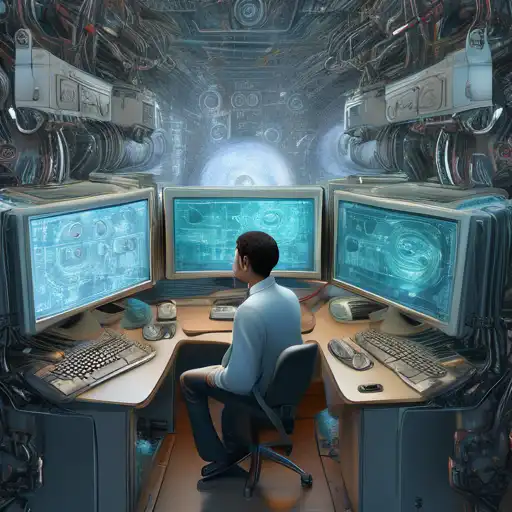Empowering Machines with Sight: The Future of Computer Vision
In the realm of artificial intelligence, computer vision stands out as a transformative technology that enables machines to interpret and understand the visual world. By leveraging digital images from cameras and videos and deep learning models, machines can accurately identify and classify objects—and then react to what they "see."
Understanding Computer Vision
Computer vision is a field of artificial intelligence that trains computers to interpret and understand the visual world. Using digital images from cameras and videos and deep learning models, machines can accurately identify and classify objects—and then react to what they "see."
From facial recognition systems to autonomous vehicles, the applications of computer vision are vast and varied. This technology is not just about seeing; it's about understanding and making decisions based on visual data.
How Computer Vision Works
At its core, computer vision involves the following steps:
- Image Acquisition: This is the process of capturing an image or video from a camera or other sources.
- Image Processing: The captured image is then processed to enhance quality or extract features.
- Feature Extraction: Key features are identified and extracted from the image.
- Decision Making: Based on the extracted features, the system makes a decision or takes an action.
This process is powered by algorithms and models, especially those based on deep learning, which have significantly advanced the capabilities of computer vision systems.
Applications of Computer Vision
Computer vision has a wide range of applications across various industries. Here are a few examples:
- Healthcare: From diagnosing diseases through medical imaging to assisting in surgeries, computer vision is revolutionizing healthcare.
- Retail: Automated checkout systems and inventory management are just a couple of ways retail is benefiting from computer vision.
- Automotive: Autonomous vehicles rely heavily on computer vision to navigate safely.
- Security: Facial recognition and surveillance systems use computer vision to enhance security measures.
As technology continues to evolve, the potential applications of computer vision are only limited by our imagination.
The Future of Computer Vision
The future of computer vision is incredibly promising. With advancements in AI and machine learning, computer vision systems are becoming more accurate and efficient. We can expect to see more personalized and interactive applications, such as augmented reality experiences and more sophisticated autonomous systems.
Moreover, as the technology becomes more accessible, small and medium-sized enterprises will be able to leverage computer vision to innovate and improve their operations.
In conclusion, computer vision is a key technology that is shaping the future of many industries. By teaching machines to see, we are opening up a world of possibilities that were once the realm of science fiction.
For more insights into how artificial intelligence is transforming industries, check out our article on The Impact of AI on Modern Businesses.
